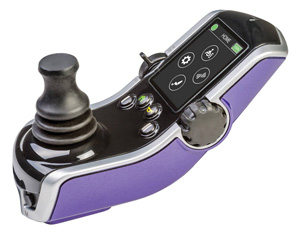Pride Learning Institute
Clinical Benefits of Device Double Commands
By: Wade Lucas, PT, DPT, ATP/SMS, Clinical Education Manager
A power wheelchair and its electronics system provide a vast amount of configurability and options to deliver greater independence for power wheelchair users. These options can give clients the ability to utilize alternative drive control systems, improve efficiency of mobility, allow self-repositioning for health and function and provide access to other technology (such as computers, phones, environmental controls, etc.) through the electric wheelchair controls.
To effectively utilize all these great features and options, the end user must be able to navigate to the various settings or modes within the system. The most common way to accomplish the navigation between modes or profiles is through a switch plugged into the on/off or mode stereo port jack of the joystick (or enhanced display) or to use the toggle on/off lever on the joystick. While these options are effective and simple for most power wheelchair users, there are others who have difficulties with control over their extremities, which impacts their ability to access alternatively placed switches or toggles.

Programming Feature of Q-Logic 3 Electronics
So, if a client cannot access a switch outside of their drive control device, what is the next option for accessing the different modes or drive profiles? When using Q-Logic 3 electronics, the answer is a programming feature called device double commands. This setting allows the completion of a double left or a double right command on the input device, regardless of the drive control device type, utilized as a mode or profile change command.
Many people may be familiar with this option in switch-control type drive input options, such as head arrays or even sip-and-puff controls. Often, the individuals using switch-type driver inputs have no other options for changing modes except through the driver controls using double commands. This feature is also available in proportional drive (joystick) control options as well. This is extremely useful when working with clients that exhibit severe limitations in strength and AROM in their extremities. These individuals may utilize the proportional joystick to manage their mobility but have limited or no ability to remove their hand (or other body part) from the joystick to activate a switch, then return their extremity to the driving position on the joystick.
Device double commands are the difference between complete independent control over the power wheelchair or dependence on others to assist with changing the drive profiles on the electric wheelchair. This is just one of the many features and advantages that Q-Logic 3 Advanced Drive Controls have to offer clients of power mobility!


